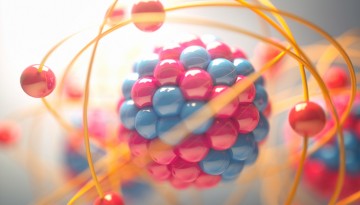Cornell University-led biomedical initiatives get NIH funding
Jack Freed, the Frank and Robert Laughlin Professor of Physical Chemistry Emeritus in the College of Arts and Sciences (A&S), has received two grants totaling $7.8 million over five years from the National Institutes of Health to use electron-spin resonance (ESR) for the benefit of public health.
Freed has pioneered the development of ESR, a method for studying materials that have unpaired electrons, to determine protein structures and their dynamical properties and their effects on membranes.
A $5.7 million grant with Brian Crane, the George W. and Grace L. Todd Professor of chemistry and chemical biology (A&S), as co-PI, establishes the National Biomedical Resource for Advanced ESR Spectroscopy (ACERT) at Cornell for use by the biomedical community.
This center will build upon 20 years of the successful prior incarnation of ACERT, which focused on the development of multiple kinds of ERS technologies to assist biomedical researchers. In its new configuration, the center will focus on user services and collaborations utilizing the established extensive and unique technologies that have already been developed. Educational and training capabilities will be provided for an expanded user base both nationally and internationally.
Located in Baker Lab on Cornell’s Ithaca campus, this national resource will provide cutting-edge ESR spectroscopy for biomedical researchers engaged in projects aimed at understanding and combating diseases and ailments (including AIDS, allergies, and inflammations, ALS, Alzheimer’s, bacterial infections, cancer, cardiac disease, depressive disorders and schizophrenia, Ebola virus infections, eye disorders, infertility, neurological disorders, Parkinson’s and both forms of the SARS virus.)
Through service and collaboration, both experimental and computational techniques will reveal disease mechanisms through the study of protein structure, dynamics and function.
The resource is the only one in the U.S., and in many ways it is unique in the world, Freed said: “We have a full staff of experienced experts to operate our extensive suite of ESR spectrometers, to provide advanced data analysis, and to supply outreach and training for new users. Our resources are available to the Cornell community as well as national and international users. We plan to establish this center as the go-to ESR resource in the U.S.”
With a second NIH grant, for $2.05 million, entitled “Advancing our Knowledge of Viral Membrane Fusion and of IDP-Membrane Interactions by ESR,” Freed will use the ESR techniques in the new resource to advance knowledge of viral-membrane (cell wall) fusion and Intrinsically Disordered Protein (IDP)-membrane interactions, which are key for enveloped viruses. ESR methods provide insight into the initial stages of the fusion process.
“We will study how many types of viruses, such as flu and HIV, among others, attack cells and what factors can help or hinder this,” Freed said. “ESR will help us learn how the parts of viruses that directly attach, called ‘fusion peptides,’ are built and how the viruses interact with membranes in order to find possible targets for new drugs to fight the viruses.”

